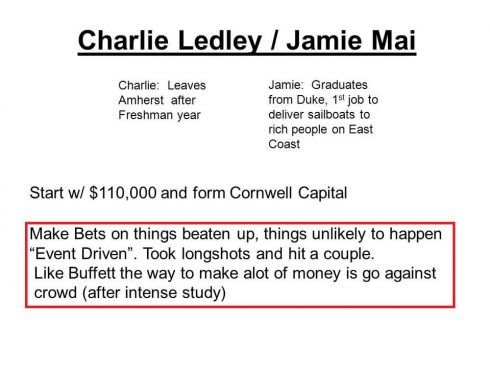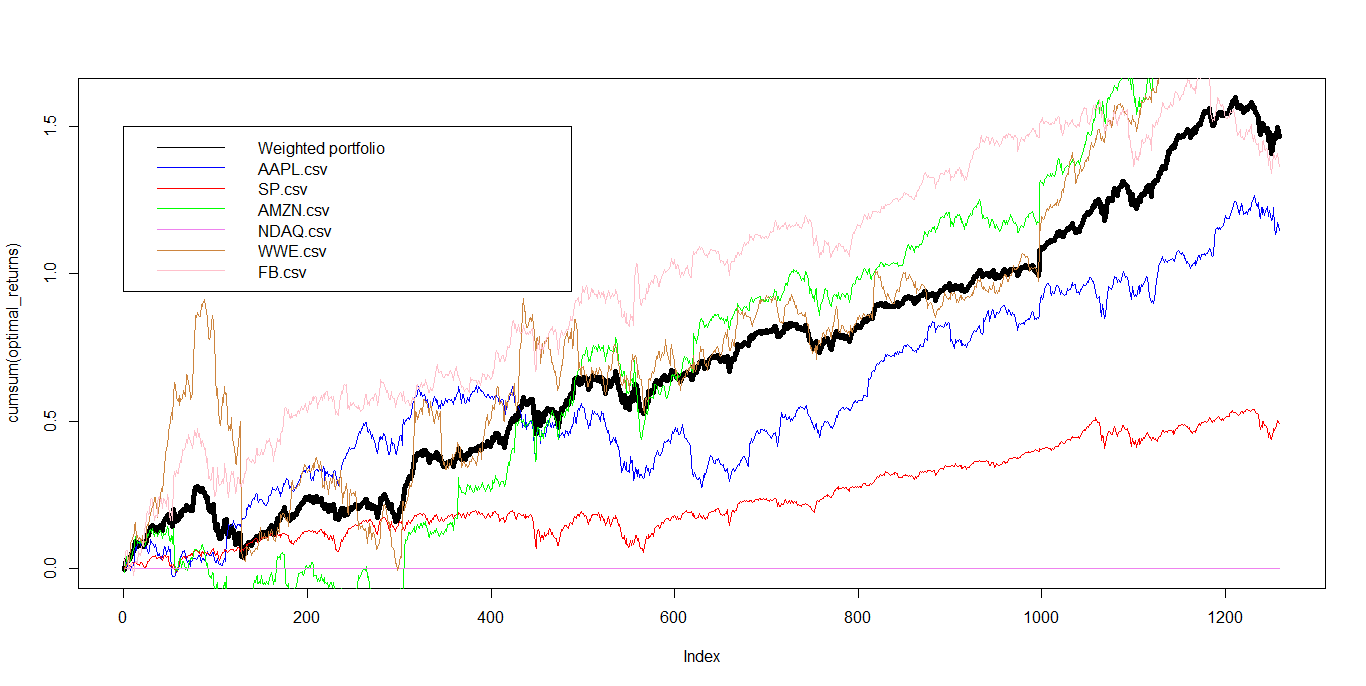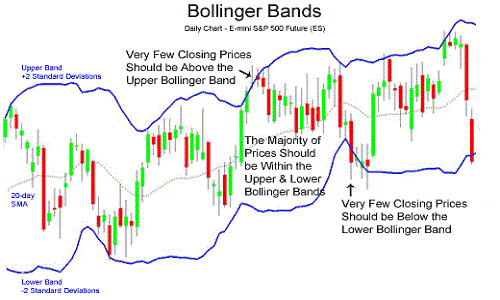SEC Filings Analytics: Forms You Need To Know For Hot Stock Picks

SEC FILINGS: Form 8-K
The Form 8-K is a document that the Securities and Exchange Commission requires publicly-held entities to file whenever there are significant changes impacting the entity. A reportable event is a transaction or occurrence of major significance. Form 8-K must be filed within four business days after the occurrence of a reportable event. For purposes of counting, day one is the first business day after the day on which the reportable event occurs. Public companies need to ensure that they have in place disclosure controls and procedures that will permit them to monitor developments that could trigger a Form 8-K filing requirement. In addition, some of the Form 8-K disclosure requirements are triggered by a decision of the board of directors, so it is important to plan board actions with these rules in mind.
Section 1 Registrant’s Business and Operations
Item 1.01 Entry into a Material Definitive Agreement
- Many agreements requiring board or shareholder approval would be filed under this Item.
- A “material definitive agreement” means an agreement that provides for obligations that are material to and enforceable against the company, or rights that are material to the company and enforceable by the company against one or more other parties to the agreement.
- Filing the agreement itself as an exhibit is not required. If the agreement is not filed as an exhibit to the Form 8-K, it will be required to be filed with the company’s next periodic report (Form 10-Q or Form 10-K)
Item 1.02 Termination of a Material Definitive Agreement
- A material definitive agreement not made in the ordinary course of business is terminated and such termination is material to the company.
Item 1.03 Bankruptcy or Receivership
- An order confirming a plan of reorganization, arrangement or liquidation has been entered by a court or governmental authority having supervision or jurisdiction over substantially all of the assets or business of the company (or its parent).
Section 2 Financial Information
Item 2.01 Completion of Acquisition or Disposition of Assets
- The company or any of its majority-owned subsidiaries has completed the acquisition or disposition of a significant amount of assets, otherwise than in the ordinary course of business.
Item 2.02 Results of Operations and Financial Condition
- An issuer typically provides its earnings press releases pursuant to this item.
- A Form 8-K is not required to be furnished to the SEC under this item in the case of disclosure of material non-public information that is disclosed orally, telephonically, by webcast, by broadcast or by similar means.
Item 2.03 Creation of a Direct Financial Obligation or an Obligation Under an Off-balance Sheet Arrangement of a Registrant
- The company becomes obligated on a direct financial obligation that is material to the company.
- A “direct financial obligation” is any of the following: (1) a long-term debt obligation, (2) a capital lease obligation, (3) an operating lease obligation, or (4) a short-term debt obligation that arises other than in the ordinary course of business.
- The company becomes directly or contingently liable for an obligation that is material to the company arising out of an off-balance sheet arrangement.
Item 2.04 Triggering Events That Accelerate or Increase a Direct Financial Obligation or an Obligation Under an Off-balance Sheet Arrangement
- This item includes instances where a company is no longer in compliance with a covenant under a loan facility or similar agreement.
- A “triggering event” (such as an event of default, event of acceleration, or similar event) causing the increase or acceleration of a direct financial obligation of the company occurs, and the consequences of the event are material to the company.
Item 2.05 Costs Associated with Exit or Disposal Activities
- This item is used to disclose restructuring or costs material write-offs.
- The company is not obligated to disclose in its initial Form 8-K filing under this item an estimate of the amount of the charges if it is unable to make a good faith estimate of such amount. However, since an inability to provide an estimate or range could trigger adverse investor reaction, the company will want to provide an estimate or range whenever possible and may wish to postpone committing to the action that will result in the charge until such an estimate is available.
Item 2.06 Material Impairments
- This item is used to report any material charge for impairment to one or more of a registrant’s assets, including, without limitation, impairments of securities or goodwill, required under generally accepted accounting principles applicable to the registrant.
- The company should disclose date of conclusion that a material charge is required, description of the impaired assets, Facts and circumstances leading to the conclusion that the charge for impairment is required, an estimate of the amount or range of amounts of the impairment charge, an estimate of the amount or range of amounts of the impairment charge that will result in future cash expenditures.
- Upon concluding that a material charge for impairment to one or more of its assets, including securities or goodwill, is required under GAAP, the company must describe the assets impaired and the company’s estimate of the charge. If no good faith estimate is available at the time of the filing, the company must file the estimate within four business days after the estimate has been formulated. If the conclusion regarding a material charge is made in connection with the preparation, review or audit of the financial statements, reporting on Form 8-K will not be required as long as the information is included in the periodic report covering that period.
Section 3 Securities and Trading Markets
Item 3.01 Notice of Delisting or Failure to Satisfy a Continued Listing Rule or Standard; Transfer of Listing
- Includes the receipt of a notice regarding material non-compliance with the listing rules.
- No filing is required if the delisting is the result of a conversion or redemption of a security.
- Any public reprimand letter from the NYSE, any notice indicating that the company is not in compliance with listing standards or that the company’s securities are being delisted must be reported. Further, the NYSE, AMEX and Nasdaq require listed companies to notify the exchange or market when the company becomes aware of material, noncompliance with listing standards.
- Disclosure is required even if the company has the benefit of a grace period or similar extension period during which it may cure the deficiency that triggers disclosure.
Item 3.02 Unregistered Sales of Equity Securities
- The company sells equity securities in a transaction not registered under the Securities Act.
- The company must disclose date of sale and title and amount of securities sold, for securities sold for cash the aggregate offering price and aggregate underwriting discounts and commissions, for securities sold other than for cash the nature of the transaction and the nature and aggregate amount of consideration received by the company, exemption from Securities Act registration claimed by the company and the facts relied upon to make the exemption available, where the securities sold are convertible or exchangeable into equity securities or are warrants or options representing equity securities, the terms of conversion or exercise of the securities sold.
- The company does not need to file a Form 8-K if the equity securities sold, in the aggregate since its last Form 8-K (if filed under this Item 3.02) or its last periodic report, whichever is more recent, constitute less than 1% of the number of shares outstanding of the class of equity securities sold. This threshold is 5% for smaller reporting companies.
Item 3.03 Material Modification to Rights of Security Holders
- Is required if the constituent instruments (such as the charter or, in the case of debentures, the indenture) defining the rights of holders of a class of registered securities have been materially modified.
Section 4 Matters Related to Accountants and Financial Statements
Item 4.01 Changes in Registrant’s Certifying Accountant
- This item is to be used if the company’s independent accountant resigns (or indicates that it declines to stand for re-appointment) or is dismissed.
- It requires the company to describe the circumstances of the accountant’s departure and to make certain statements concerning the work of the company’s accountant during the previous two fiscal years.
Item 4.02 Non-reliance on Previously Issued Financial Statements or a Related Audit Report or Completed Interim Review
- The company’s board of directors, a board committee or an authorized officer or officers (if board action is not required) concludes that any of the company’s previously issued financial statements, covering one or more years or interim periods, should no longer be relied upon because of an error in such financial statements.
- Form 8-K must be used to report events covered by this item, even if the event happens to occur within four business days before the company’s filing of a Form 10-Q or 10-K.
Section 5 Corporate Governance and Management
Item 5.01 Changes in Control of Registrant
- If, the company’s board of directors becomes aware that a change in control of the company has occurred, the company should use this item to disclose (i) the identity of the person(s) who acquired control; (ii) date and description of the transaction(s) that resulted in the change in control; (iii) the basis of the control, including the percentage of voting securities of the registrant now beneficially owned directly or indirectly by the person(s) who acquired control; (iv) the amount of consideration used by such person(s); (v) the source of funds used by the person(s).
Item 5.02 Departure of Directors or Certain Officers; Election of Directors; Appointment of Certain Officers; Compensatory Arrangements of Certain Officers
- This item is required if a director has resigned or refuses to stand for board reelection since the date of the last annual meeting of shareholders because of a disagreement with the company, known to an executive officer of the company, on any matter relating to the company’s operations, policies or practices, or if a director has been removed for cause from the board of directors.
- Departure of Principal Officer or Named Executive Officer; Departure of Director Not Otherwise Covered – A principal officer or named executive officer retires, resigns or is terminated from that position; or one of the company’s directors retires, resigns, is removed or refuses to stand for re-election under circumstances that do not require the company to provide disclosure under Item 5.02(a) (Item 5.02(b)).
Item 5.03 Amendments to Articles of Incorporation or Bylaws; Change in Fiscal Year
- Amendments – The company amends its charter or by-laws and the proposed amendment was not disclosed in a previously filed proxy statement or information statement
- Change in Fiscal Year – The company determines to change the fiscal year from that used in its most recent filing with the SEC by means other than (i) a submission to a vote of security holders, or (ii) an amendment to its charter or bylaws
Item 5.04 Temporary Suspension of Trading Under Registrant’s Employee Benefit Plans
- The company receives the notice required by section 101(i)(2)(E) of the Employment Retirement Income Security Act of 1974 (relating to a temporary suspension of trading under an employer benefit plan) or, if such notice is not received by the company, the company transmits a timely notice to an affected officer or director within the time period prescribed by Regulation BTR.
Item 5.05 Amendments to the Registrant’s Code of Ethics, or Waiver of a Provision of the Code of Ethics
- Required disclosure is a brief description of date and nature of any amendment and a brief description of nature and date of waiver and person to whom a waiver was granted.
Item 5.06 Change in Shell Company Status
Item 5.07 Submission of Matters to a Vote of Security Holders
- A matter was submitted to a vote of security holders, through the solicitation of proxies or otherwise.
Item 5.08 Shareholder Director Nominations
- A company is required to include shareholder director nominees in the company’s proxy materials pursuant to applicable state or foreign law or the company’s governing documents
- Within four business days after the company determines the anticipated meeting date, the company must disclose the date by which a nominating shareholder or shareholder group must submit the Schedule 14N required pursuant to Rule 14a-18.
Section 6 Asset-backed Securities
Item 6.01 ABS Informational and Computational Material
Item 6.01 ABS Informational and Computational Material
Item 6.02 Change of Servicer or Trustee
Item 6.03 Change in Credit Enhancement or Other External Support
Item 6.04 Failure to Make a Required Distribution
Item 6.05 Securities Act Updating Disclosure
Section 7 Regulation FD
Item 7.01 Regulation FD Disclosure
- This item applies when the company wants to use Form 8-K to satisfy its obligations under Regulation FD and it desires to have the Form 8- K be deemed to be furnished rather than filed (Section 18 of the Exchange Act imposes liability for material misstatements or omissions contained in reports and other information filed with the SEC. By contrast, reports and other information that are “furnished” to the SEC (to the extent expressly permitted under applicable SEC rules) do not attract liability under Section 18).
Section 8 Other Events
Item 8.01 Other Events
- This item is used when the company voluntarily wants to disclose any event that it deems of importance to security holders and with respect to which information is not otherwise required by Form 8-K. Since this use of Form 8-K is voluntary, there is no filing deadline.
Section 9 Financial Statements and Exhibits
Item 9.01 Financial Statements and Exhibits
- This item is used to file financial statements and pro forma financial information for transactions required to be described by Item 2.01. See “Reportable Items – Item 2.01” for more information
SEC filings analytics- FULL TEXT SEARCH WITH EDGAR FILINGS -FAQ
- What is Full-Text Search?
Full-Text Search will allow you to search the full text of all EDGAR filings submitted electronically in the last four years. The full text of a filing includes all data in the filing itself as well as all attachments (such as exhibits) to the filing. Full-Text Search uses a conceptual search engine to search and retrieve the information you need.
- How to search by specific form type ?
Click the “Advanced Search” link. To limit your search to a specific form type, use the “In Form Type” pull-down menu to select a form type from the list provided. For information about form types, click on this link.
- How to search by company name ?
Click the “Advanced Search” link. To search by company name, select the “Company Name” option and type the name of the company in the box. Optionally you can also search by CIK, industry or SIC code.
- Can I see a list of additional companies that have the same SIC code as the one in my list of search results?
Yes. After performing a search, click the desired SIC Code appearing in your list of search results.

- What kinds of searches can I do on Full-Text Search?
You can search Full-Text Search using “natural language” or Boolean search operators.
- What is “natural language” searching?
Natural language searching allows you to search for a concept by using the language that you would use to express that concept to another person.
Example: fluctuations in interest rates
- How do I search for an exact phrase, such as “management discussion and analysis”?
Enter the exact phrase in quotation marks.
Example: “management discussion and analysis”
The use of quotation marks will find documents containing the exact phrase “management discussion and analysis.” The results set will not be limited only to that phrase, however, and may also include conceptually related phrases such as “managerial discussion & analysis.”
- I want to search for a proper name. Should I capitalize the name?
Yes. Capitalizing the proper name will cause the search engine to increase the relevance ranking of the documents containing the name.
Example: Department of Energy
- I did a search and found a document that I wanted to view. I opened the document, but I couldn’t find the search term in the document. What do I do?
Notes:
- The EDGAR search engine is a conceptual search engine rather than a key word search engine. Therefore it may retrieve some results that are conceptually related to your search terms but do not necessarily contain your precise search term.Also, if you did a wildcard search, the search engine may retrieve results that include words similar to your search terms.Example:
You searched on … The search retrieved documents that contained … commun* community or communication or communal, etc.
Finding your search terms within the document:
- If the document is in HTML (the usual web page format), or a text file, click CTRL+F (at the same time), then type your search term in the box, and click “Find Next.”
- If the document is in Adobe PDF format, click on the binocular icon, type your search term, and click “Find.
- How does Boolean searching work?
Boolean searching allows you to narrow, broaden, or limit a search by connecting search terms with Boolean operators such as AND, OR, and NOT. All Boolean operators must be typed in uppercase letters.
Example: AND, OR, NOT
- How does the Boolean operator AND work?
The Boolean operator AND narrows your search by telling Autonomy that all terms connected by the AND operator must be contained in a document (but not necessarily in the same sentence or paragraph). These terms can appear in any order in the document.
Example: software AND hardware
- How does the Boolean operator OR work?
The Boolean operator OR broadens your search by locating a document containing any of the terms connected by the OR operator.
Example: trucks OR cars
- How does the Boolean operator NOT work?
The Boolean operator NOT limits your search by locating documents that contain one term but not another term.
Example: petroleum NOT gasoline
This search will locate documents that contain the term “petroleum” but not the term “gasoline.”
- What if I find a document that includes the terms I entered, but I want the terms to be closer together in the document?
You can use operator NEARn to locate documents that contain the terms you selected within “n” words, or fewer, of one another (where n is the number of words).
Example: general NEAR1 motors
- Is there a “wildcard” symbol that will allow me to search by the root of a word followed by one or more additional characters?
The asterisk (*) is a wildcard symbol that searches for the root of a word followed by one or more characters.
Example: communicat*
This search will locate documents that contain terms such as communicate, communicates, communicated, communication, communications, and communicating.
- How can I find parent filings and filing exhibits?
Links to “Parent Filing” and “Exhibits List” appear on the search results screen below each document summary, as appropriate.
- I search on a specific word, but the results return other stems or variations of the word. How can I turn this off?
The Full-Text Search Engine, by default, searches on the stems of words in the query. For instance, “securities” would get stemmed to “secur” and also find “security,” “secure,” “securing,” and “secures.” To turn this off, on the Advanced search menu page, deselect the “Use Stemming” checkbox and the search engine will not stem your query terms. A search on “securities” will only return “securities.”
Important keywords to look out for :
“anticipates” “could” “forecasts” “might” “projects” “believes”
“estimates” “intends” “plans” “scheduled” “budgets” “expects”
“may” “predicts” “should” “impact of” “cancellation” “criminal”
“access to liquidity” “contract backlog” “inadequate liquidity”
We value your input if you have found any other important keywords when analyzing SEC filings let us know and we will send the full list to our newsletter subscribers.
- Crawling the EDGAR masterfiles (Program to download master files from EDGAR)
- Creating a data and directory structure (This program grabs all the master files downloaded and pipes the content corresponding for each CIK into a new file)
- Reading the master files (This program reads through the individual files from the QTRmaster EDGAR indexes. It counts the number of forms, as well as the number of particular types of forms (10-K, 8-K, etc). It also pipes the form fields (as strings) into another file)
- Crawling 8-K statements (This program starts with the list of all CIKs with certain counts and crawls the 8-K statements)
- Reading 8-K statements ( This program reads through 8K statements and counts the number of occurrences of a given set of words)







